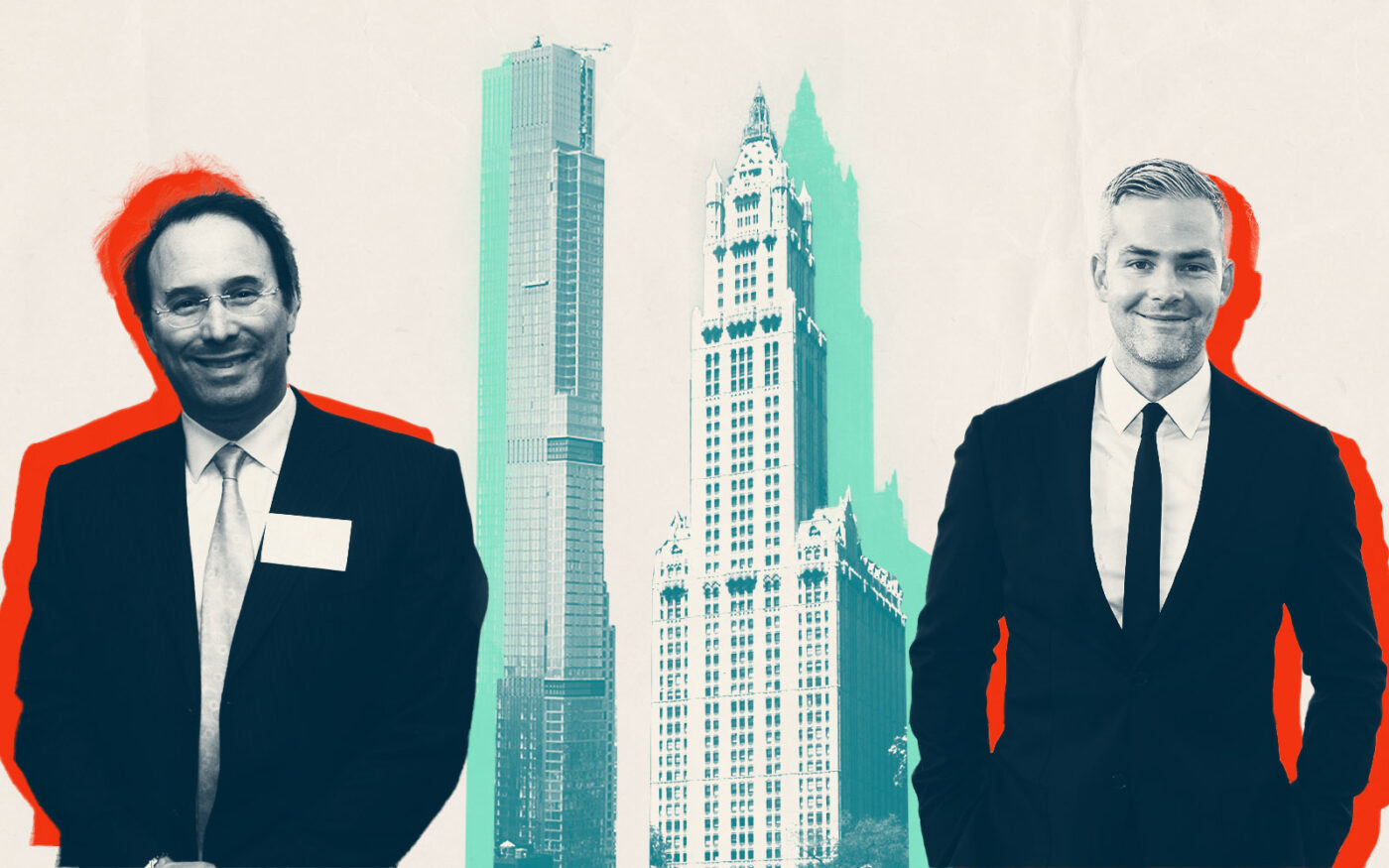 Gary Barnett slashes price on Central Park Tower penthouse by $55M
Gary Barnett slashes price on Central Park Tower penthouse by $55M
Brokers talk “headline pricing”
How developers, brokers price units to drum up buzz

In a city where eight-figure deals are commonplace, most Manhattanites don’t bat an eye at the price tag on an ultra-luxury pad.
But every now and then, a listing will hit the market with a price so high that it prompts a deluge of press coverage, social media posts and industry gossip — including about whether the dollar figure is realistic or hype.

“They seem to be in a contest,” Compass’ Vickey Barron said. “Whether it’s worth that price or not, they just want to come out with that headline.”
Take Gary Barnett’s penthouse at Central Park Tower: an 18,000-square-foot triplex marketed by Ryan Serhant as the highest residence in the world. The unit went up for sale last year priced at $250 million, earning it a front-page spread in the Wall Street Journal and multiple spots on Serhant’s YouTube page.
The Extell founder’s crown jewel recently made the media rounds again when he slashed the price to $195 million. Barnett copped to the initially inflated ask, calling it a “headline price” that he revised in an attempt to “get serious” about locking down a buyer.
“I don’t have to use the tactic of overpricing something to get attention.”
The tactic, often referred to as aspirational pricing, is common among developers, though some media-savvy brokers have also leaned on the strategy to boost resale listings — and their brands.
Aspirational pricing isn’t new to Manhattan. But the astronomical price tags like the Central Park Tower penthouse’s have become more pervasive with the rise of Billionaires’ Row and other ultra-luxury enclaves.
Though these listings are sure to raise some eyebrows, the buzz generated when they hit the market — and again when their prices are reduced — could help attract a buyer. But the strategy doesn’t always pan out.
One notable example is the “Pinnacle” penthouse at the iconic Woolworth Building in Tribeca. Developer Alchemy Properties listed the quadplex for an eye-popping $110 million, in 2014, and the 12,000-square-foot unit was splashed across headlines.
When news of the unit’s asking price first broke, “you should have heard the chatter,” Barron said. “We knew that that number didn’t make sense.”
Barron would prove right when after six years and multiple price cuts, the 12,000-square-foot unit finally sold for $30 million.
Even the developer acknowledged the sale was a flop. Ken Horn, president of Alchemy Properties, told the Wall Street Journal, “on the surface, that number is not a good number.”
Alchemy likely wasn’t aiming for quite as big of a price drop, but Barron said some developers may intentionally set a price higher than they expect to get to make it seem that buyers are getting a deal.
While the closing price could be as much as 50 percent lower than the initial ask, it could meet or even exceed the developer’s expectations. But the strategy has its detractors.

“It’s not aspirational pricing, it’s overpricing,” said John Gomes, co-founder of Douglas Elliman’s Eklund-Gomes team.
Gomes said an artificially high price can damage the market because it skews data on pricing and discount comparisons, and can lead sellers in similar buildings or neighborhoods to believe their homes can sell for more than is likely.
Instead, Gomes said he aims to price properties as close as possible to where he thinks they will trade. Doing otherwise, he said, could damage his credibility.
Though exaggerated prices can bring visibility to a project, to Gomes, media coverage of multiple price reductions and the possibility of a lackluster deal at the end aren’t worth the risk.
“I’m not afraid to price something at $100 million if it’s worth $100 million,” Gomes said. “I don’t have to use the tactic of overpricing something to get attention.”
But not all brokers share Gomes’ sentiment, though they may not openly acknowledge doubts about a lofty asking price.
“There are agents out there who purposefully price everything high to get the listing,” Compass’ Leonard Steinberg said. He added that for some, “attention from the press with the high price and then again when they drop the price” is part of their marketing toolbox.
Aside from the Central Park Tower listing, Serhant has drawn criticism for other high prices. In 2014, the former reality TV star listed a penthouse in Battery Park City at $118 million — an ambitious goal for a resale in that neighborhood.
Serhant was later ousted from the listing, the most expensive on the market at the time. The penthouse, at the Ritz-Carlton Residences, went to the auction block in 2017, but did not sell, and hit the market again in 2021 at $24.5 million, only to be removed a year later.
In the Hamptons, Bespoke founders Cody and Zach Vichinsky are notorious for setting unprecedented prices.
The pair listed 105 Jule Pond Road for $175 million in 2017. By 2019, they had cut the price to $145 million. The estate finally sold for $105 million. It was still one of the most expensive sales in Hamptons history.

But not everyone agrees that the high prices are a negative for the industry, and the Vichinskys’ nine-figure sale might support that view. Sometimes shooting for the stars and missing can still mean walking away with more money than originally expected.
Barnett scored $100.5 million from Michael Dell for a One57 penthouse in 2014, shocking even veterans of the luxury market. Later, Vornado asked $100 million to $250 million for the six priciest units at 220 Central Park South, which turned out to be the most profitable condominium ever.
Long before that, the Zeckendorfs’ pricing at 15 Central Park West and 520 Park Avenue projects that redefined luxury seemed outrageous, but the developers largely got what they sought. Within a few years, the initial prices looked modest.
“What is remarkable about New York City is that we really never know where the ceiling is,” Douglas Elliman’s Michael Graves said. “In the rearview mirror, some things look aspirational, but sometimes those numbers happen.”
Read more
 Gary Barnett slashes price on Central Park Tower penthouse by $55M
Gary Barnett slashes price on Central Park Tower penthouse by $55M
 Woolworth Building penthouse sells for just $30M
Woolworth Building penthouse sells for just $30M
 NASCAR family snags $17M Central Park Tower unit
NASCAR family snags $17M Central Park Tower unit




